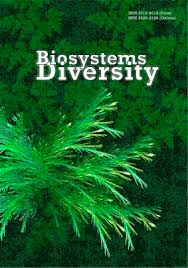Sulfidogenic and metal reducing activities of Desulfuromonas genus bacteria under the influence of copper chloride
Sulfidogenic and metal reducing activities of Desulfuromonas genus bacteria under the influence of copper chloride
Author(s): S. O. Hnatush, O. M. Moroz, G. V. Yavorska, B. M. BorsukevychSubject(s): Energy and Environmental Studies, Environmental interactions
Published by: Дніпропетровський національний університет імені Олеся Гончара
Keywords: sulphur-reducing bacteria; hydrogen sulfide; copper; heavy metals;
Summary/Abstract: The selection of strains isolated from technogenically altered ecotopes and resistant to contamination, capable of metabolizing a wide range of pollutants is a task highly relevant for creation of new methods for environmental purification. Sulphur-reducing bacteria of the Desulfuromonas genus carry out dissimilatory reduction not only of S0 but also oxidized forms of metals. Intensity of anaerobic respiration of microorganisms in polluted environments is determined by level of their adaptation to stress factors, in particular, copper (II) compounds. The aim of this work was to investigate the influence of copper (II) chloride on H2S production by Desulfuromonas sp. strains isolated by us from Yavorivske Lake, to determine the efficiency of Cu2+ precipitation by hydrogen sulfide, to analyse the possibility of usage by bacteria of CuCl2 as an electron acceptor of anaerobic respiration and to study the influence of Cu2+ on usage by these microorganisms of ferric (III) citrate, potassium dichromate or manganese (IV) oxide as electron acceptors. Bacteria were grown under anaerobic conditions in Kravtsov-Sorokin medium. To study the influence of Cu2+ on production by bacteria of H2S, their cells were incubated with CuCl2 (0.5–4.0 mM), washed and cultivated in a medium with S0. To determine the level of Cu2+ binding by H2S, produced by bacteria, cells were grown in a medium with CuCl2 (0.5–4.0 mM) and S0. To investigate the ability of bacteria to use copper (II) ions as electron acceptors, they were cultivated in a medium with CuCl2 (1.74–10.41 mM). To study the influence of Cu2+ on usage by bacteria of metal compounds as electron acceptors, their cells were incubated with CuCl2 (0.5–4.0 mM), washed and cultivated in media with C6H5O7Fe, K2Cr2O7 or MnO2 (1.74–10.41 mM). Biomass was determined by the turbidimetric method. In the cultural liquid the content of H2S was determined quantitatively by the spectrophotometric method, qualitatively – presence of Cu2+. Content of CuS in the growth medium was determined by weight method. Desulfuromonas sp. bacteria was revealed to be resistant to 2.0–2.5 mM copper (II) ions.
Journal: Biosystems Diversity
- Issue Year: 26/2018
- Issue No: 3
- Page Range: 218-226
- Page Count: 9
- Language: English

